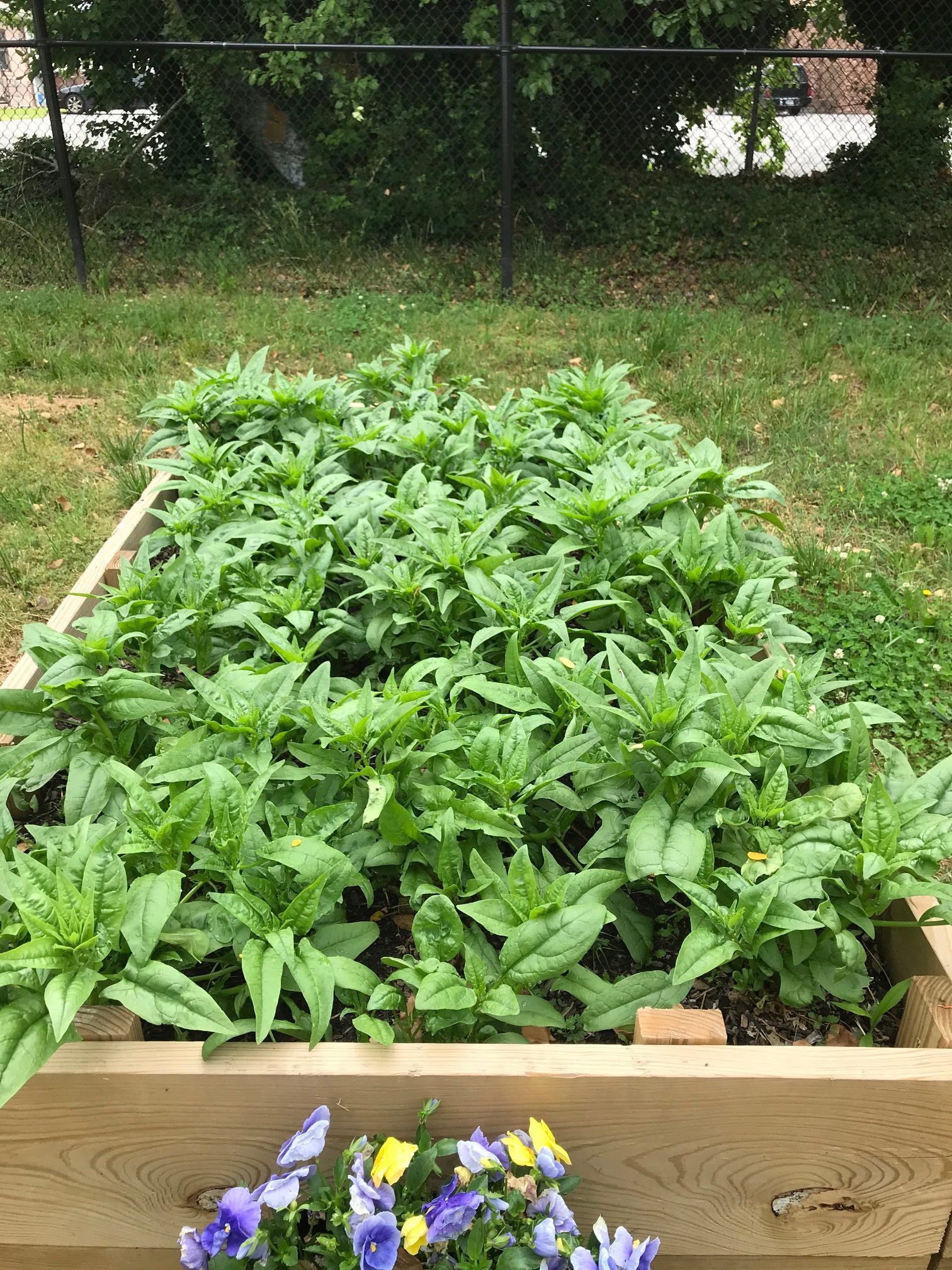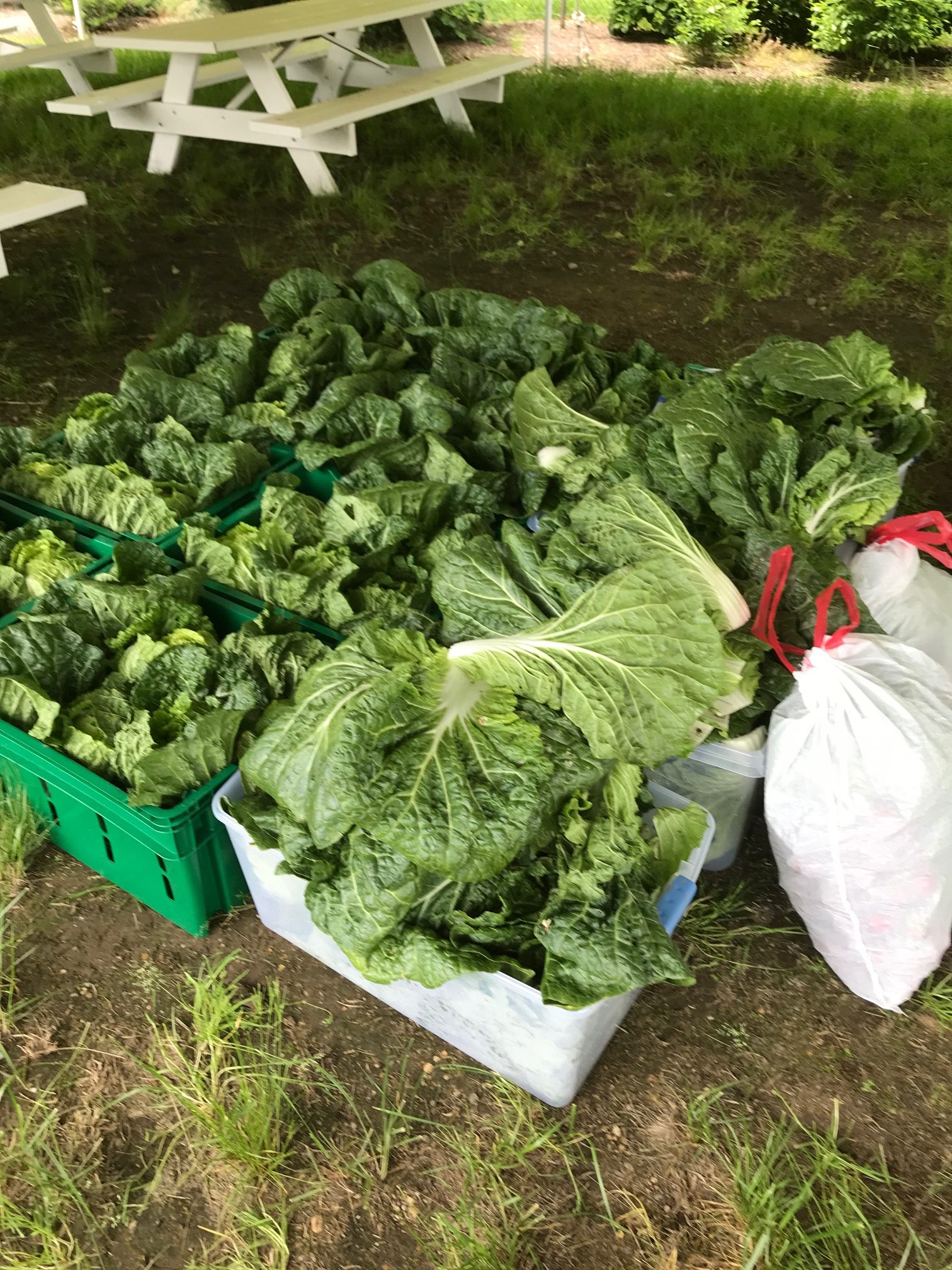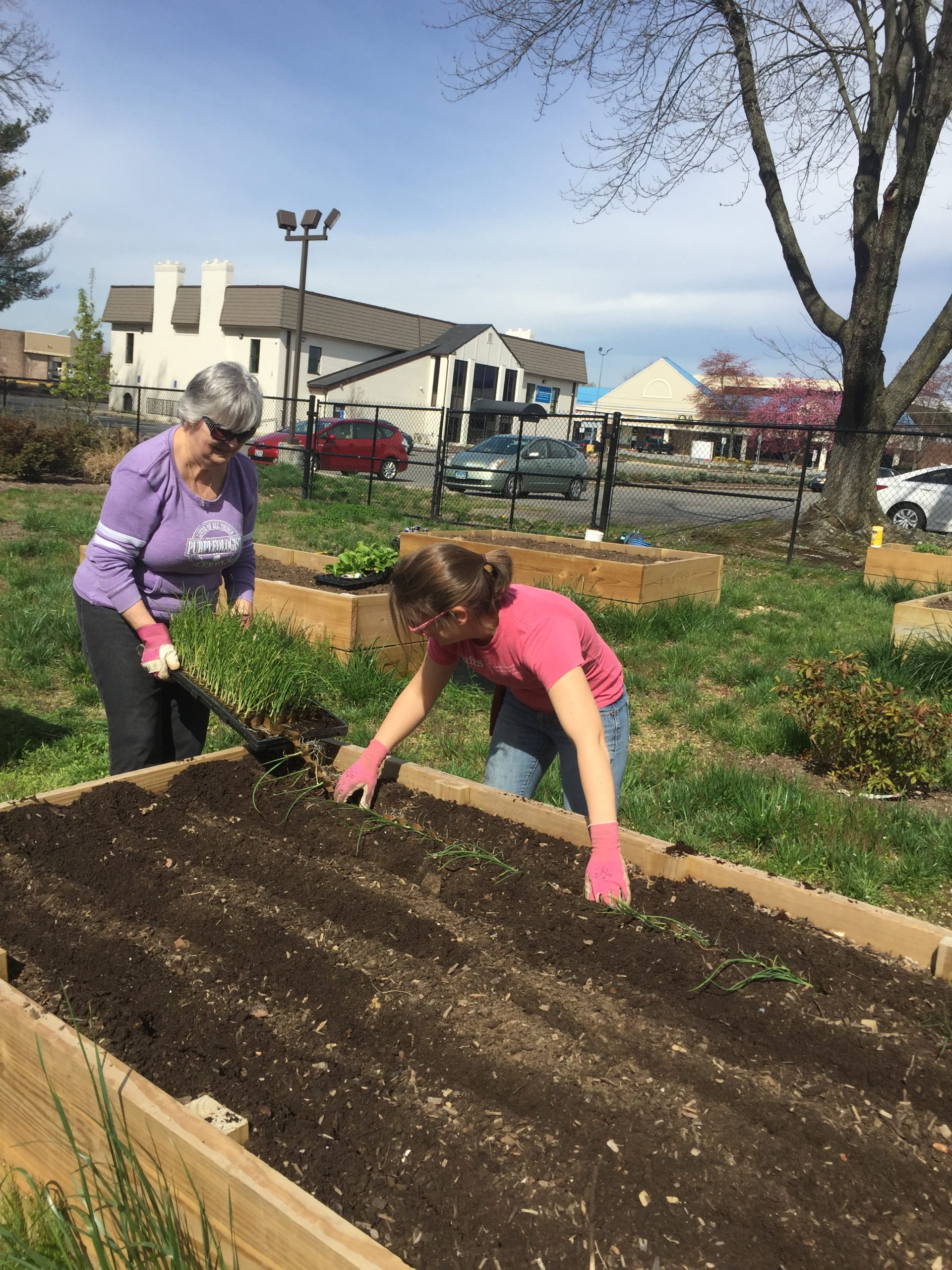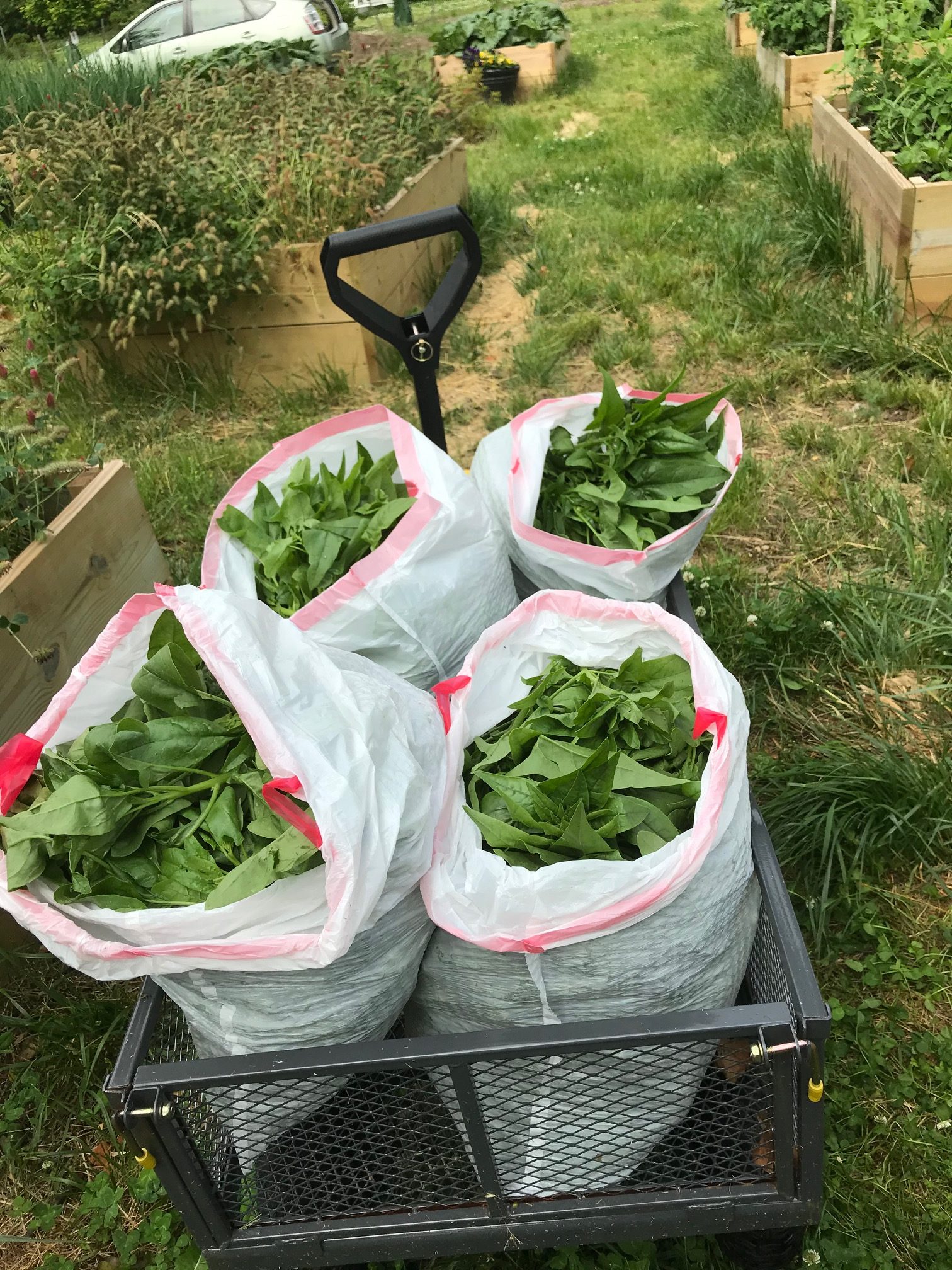2020 marks the fifth anniversary of Laudato Si, Pope Francis’ landmark call to increase efforts to care for the Earth. In honor of this significant occasion, this month, we will highlight ways Catholic Charities DC is heeding the Holy Father’s message to preserve the environment for future generations.

If you were to call the 12 raised planting beds behind Catholic Charities’ Susan Denison Mona Center in Temple Hills, Md., a “garden,” Lynn Brooks, a graduate student at the University of Maryland College of Agriculture, would be quick to correct you.
“It is an urban farm, and that’s an important distinction,” she said about the project that began last summer.
Urban farms, rather than community gardens, are designed to generate produce in larger quantities. While not a new concept (the practice was often implemented during times of war dating back to the 19th century), urban agriculture has seen a rise in popularity in recent years to increase sustainability among communities and address food insecurity. Many communities are attracted to urban farming because farms can be established in almost any kind of unused space – parking lots, old warehouses, or even rooftops.
The Mona Farm sits on what was, as of 2018, a parking lot. The project is a result of an ongoing collaboration between Catholic Charities DC, which provided the land, Doctor’s Community Hospital, which donated the planting beds and a shed, and the UMD School of Agriculture, which manages the farm by providing a faculty member and graduate intern (Brooks) who act as farmers.

“The area around the Mona Center has traditionally been considered a food desert,” said Joe Dempsey, director of special projects at Catholic Charities DC. “The original concept to include the farm as part of the Mona Center was to be able to provide clean produce for this community.”
Mona farmers employ all natural and sustainable growing methods. They do not use synthetic pesticides or harmful chemicals. They use natural and organic seeds to ensure they are growing fresh and clean produce. In addition, the farm features eight flower pots to attract bees and other pollinators to the beds. The farm has also started a compost pile to help fill in some gaps in the soil.
Vegetables and herbs that are harvested from the farm reach Catholic Charities’ clients in a variety of ways. They are included in grocery boxes distributed by food assistance programs, and they are featured ingredients in the hot meals prepared by staff in our KitchenWorks program (which trains clients for careers in the culinary industry) and provided to clients through our St. Maria’s Meals weekly food service.

This literal farm-to-table model helps reduce the community’s carbon footprint by decreasing the reliance on transporting produce in from out of state, resulting in a reduction of carbon emissions. And, as an added environmental benefit, the farm helps improve the community’s air quality by absorbing carbon dioxide and releasing oxygen.
The farm generates a variety of seasonal and healthy vegetables, which are outlined in the farm’s crop plan. Farmers choose what vegetables to plant by working closely with Ken Chadwick, KitchenWorks’ program manager, to determine what produce he needs for menus. Before finalizing the crop plan, the team also considers weather, time of year, and versatility and popularity of the vegetables.

“It’s important that the clients we serve are top of mind,” Brooks said. “For instance, many clients know how to cook with a zucchini, but they may not know what to do with a squash and we want to eliminate as much guess work as possible when it comes to feeding their families.”
The farm’s growing season runs from March through November and has yielded four successful harvests. The last harvest in May produced 382 pounds of cabbage, 39 pounds of radishes, and 37 pounds of spinach. Previous harvests have generated an average of 15-25 pounds for each vegetable. Brooks said the next harvest will include one bed of purple peas, a bed of snap peas, two beds of onions, one-half bed of garlic, as well as basil, sweet bell peppers, tomatoes, zucchini, and cucumbers.

In its first year, Mona Farm has added significant environmental and social benefits to the community. But, just like the vegetables the farmer’s plant, the farm looks to grow to impact even more people in a variety of ways. Farmers hope to add 12 more planting beds, a greenhouse for year-round planting, a washing station and cooler for easier transportation, and an automatic filtration system to help conserve water. The farmers and volunteers would also like to create programming for members of the community to learn about agriculture and nutrition, and even invite them to volunteer to work on the farm.
Catholic Charities’ Mona Farm is a great example of the agency’s broader effort to focus on sustainability to support communities well into the future. Brooks agrees.
“This farm could go on forever and feed generations of people in need.”